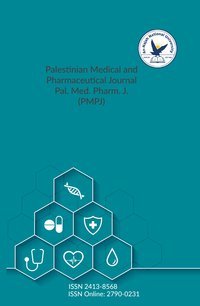Cranial Nerve Anatomy in As-Safwa by Abu Nasr Al-Masihi
Article info
2022-05-04
2022-09-16
183 - 190
Keywords
- History of Medicine
- Neuroanatomy
- Islamic Medicine
Abstract
Introduction: Knowledge of cranial nerve anatomy has evolved over centuries, from the writings of Galen in the second century, who described 7 nerves, to Versailles in the 16th century, to our current 12-nerve anatomical understanding adopted under Soemmerring in the 18th century. The Arabic golden age of medical transcription is often overlooked, given that little of that period remained after the end of Islamic rule. Here we translate a chapter found in the medical text As-Safwa by Iraqi Physician Al-Masihi, as seen in the Wellcome Online Library. Methods: The manuscript of As-Safwa by Abu Nasr Al-Masihi, obtained from the Arabic Manuscripts Collection of the Wellcome Library (London), was reviewed, and the primary author translated relevant chapters on neuroanatomy of the cranial nerves. A tran-script of the chapter was included as it is licensed under a Creative Commons Attribution 4.0 International License. Results: Abu Nasr S Al-Masihi was a physician who resided in Bagh-dad in the 13th century. He was known for having treated the Abbasid Caliph Al-Nasir li-Din Allah. Like what was commonly taught by his contemporaries, Al-Masihi described in "As-Safwa" seven cranial nerves. He disregarded the olfactory tract in his discussion and began with a discussion of the optic nerve. He singled out this nerve in describing its texture, as did Galen. Conclusion: The transcription of As-Safwa was completed decades following the fall of the Abbasids. Al-Masihi likely contributed to the House of Wisdom's efforts of medical knowledge documentation due to their association with the Royal families, which had spon-sored the accumulation of scientific texts in Baghdad's libraries. However, the contributions of many of the physicians of their time will, unfortunately, remain unknown.
Cranial Nerve Anatomy in As-Safwa by Abu Nasr Al-Masihi
معلومات المقال
2022-05-04
2022-09-16
183 - 190
الكلمات الإفتتاحية
- History of Medicine
- Neuroanatomy
- Islamic Medicine
الملخص
Introduction: Knowledge of cranial nerve anatomy has evolved over centuries, from the writings of Galen in the second century, who described 7 nerves, to Versailles in the 16th century, to our current 12-nerve anatomical understanding adopted under Soemmerring in the 18th century. The Arabic golden age of medical transcription is often overlooked, given that little of that period remained after the end of Islamic rule. Here we translate a chapter found in the medical text As-Safwa by Iraqi Physician Al-Masihi, as seen in the Wellcome Online Library. Methods: The manuscript of As-Safwa by Abu Nasr Al-Masihi, obtained from the Arabic Manuscripts Collection of the Wellcome Library (London), was reviewed, and the primary author translated relevant chapters on neuroanatomy of the cranial nerves. A tran-script of the chapter was included as it is licensed under a Creative Commons Attribution 4.0 International License. Results: Abu Nasr S Al-Masihi was a physician who resided in Bagh-dad in the 13th century. He was known for having treated the Abbasid Caliph Al-Nasir li-Din Allah. Like what was commonly taught by his contemporaries, Al-Masihi described in "As-Safwa" seven cranial nerves. He disregarded the olfactory tract in his discussion and began with a discussion of the optic nerve. He singled out this nerve in describing its texture, as did Galen. Conclusion: The transcription of As-Safwa was completed decades following the fall of the Abbasids. Al-Masihi likely contributed to the House of Wisdom's efforts of medical knowledge documentation due to their association with the Royal families, which had spon-sored the accumulation of scientific texts in Baghdad's libraries. However, the contributions of many of the physicians of their time will, unfortunately, remain unknown.
An-Najah National University
Nablus, Palestine
Nablus, Palestine
- P.O. Box
- 7, 707
- Fax
- (970)(9)2345982
- Tel.
- (970)(9)2345560
- (970)(9)2345113/5/6/7-Ext. 2628
- [email protected]
- EIC
- Prof. Ismail Warad
